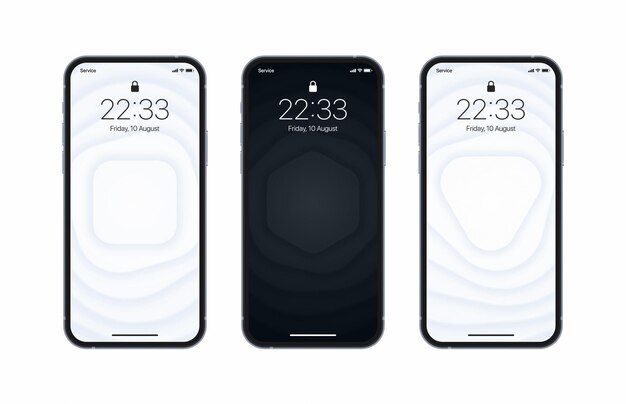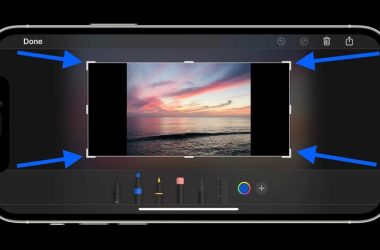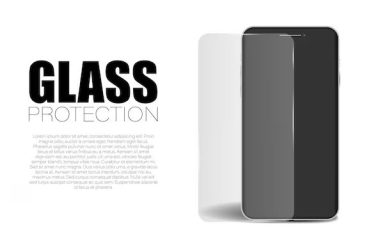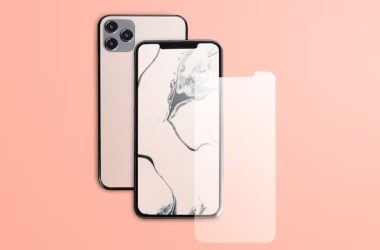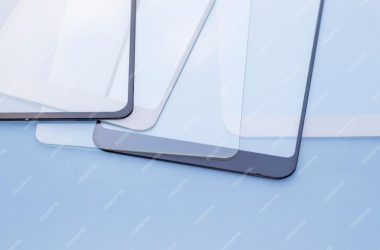Apple has used different aspect ratios across various iPhone models over the years. The original iPhone up to the iPhone 4s used a 3:2 aspect ratio. With the introduction of the iPhone 5 in 2012, Apple switched to a 16:9 aspect ratio. In 2017, Apple introduced the iPhone X which had a taller 19.5:9 aspect ratio display. More recent models like the iPhone 12 Pro Max have gone even taller with a 19.5:9 aspect ratio screen.
The aspect ratio impacts the overall size and shape of the iPhone display. A taller or narrower aspect ratio changes the phone’s dimensions and can affect one-handed use. It also impacts how much content is visible on screen in portrait or landscape orientation. For example, a 16:9 screen shows black bars on the top and bottom when watching widescreen video. But a more square 4:3 ratio can feel cramped when browsing the web. Finding the right blend of aspect ratio and screen size for ergonomics is an ongoing evolution.
16:9 Aspect Ratio
The 16:9 aspect ratio was first introduced with the iPhone 5 in 2012. This was a shift from the 3:2 aspect ratio used in previous iPhone models.
The 16:9 aspect ratio has some pros and cons when it comes to ergonomics:
Pros:
- The elongated design makes it easier to hold the phone vertically for activities like browsing or reading. The phone is less wide, so easier to grip with one hand (source).
- The extra vertical space is better suited for viewing widescreen video content.
Cons:
- The narrower width can make typing in landscape orientation more difficult (source).
- The elongated design results in a heavier phone that’s not as well balanced in the hand.
16:10 Aspect Ratio
The 16:10 aspect ratio was used in iPhone models like the iPhone 8 and earlier. This aspect ratio provided some ergonomic pros and cons.
On the pro side, the 16:10 ratio allowed for easy one-handed use. With a narrower body, users could comfortably hold and operate the iPhone 8 in a single hand. The smaller screen was also praised for its ergonomics by reviewers like T3, who stated “Thanks to the small screen it’s one of the most ergonomic phones we’ve ever used.”
However, the 16:10 ratio also had some drawbacks ergonomically. The smaller screen required more scrolling and zooming to view content. Two-handed use could feel cramped, especially when typing. The iPhone 8’s design was shorter but slightly wider than later models, which some users found less comfortable to hold.
Overall, the 16:10 ratio provided some benefits for one-handed use but felt limited for two-handed operation and content viewing compared to later aspect ratios.
19.5:9 Aspect Ratio
The 19.5:9 aspect ratio was first seen in the iPhone X, which was released in 2017. This ultra-widescreen aspect ratio allowed Apple to increase the screen size of the iPhone X while keeping it compact enough for comfortable one-handed use.
The main benefits of the 19.5:9 aspect ratio are the larger screen real estate for content consumption and multi-tasking. The elongated design also makes typing in landscape orientation more ergonomic by spreading out the on-screen keyboard (1). However, the very tall and narrow screen can cause issues with reaching UI elements at the top for users with smaller hands. It also results in large black bars when watching content in more traditional aspect ratios like 16:9 or 4:3 (2).
Overall, the 19.5:9 aspect ratio strikes a balance between one-handed usability and maximizing display area on a smartphone. But it can take some getting used to, especially for users upgrading from 16:9 devices.
21:9 Aspect Ratio
The 21:9 aspect ratio was introduced with the iPhone 12 series in 2020. This ultra-wide screen provides more vertical space compared to previous iPhone models (AnandTech).
The taller design has some ergonomic implications. While the iPhone 12 Pro Max is easier to type on with two hands thanks to the extra height, one-handed use can be more challenging due to the increased width and weight (Reddit). The flat edges of the iPhone 12 series also feel less comfortable in the hand compared to the rounded sides of previous models.
Overall, the move to the 21:9 aspect ratio provides some benefits like more screen real estate for content, but also introduces ergonomic tradeoffs, especially for one-handed use.
One-Handed Use
One of the biggest ergonomic challenges with larger iPhone screens is using the device comfortably with just one hand. Apple has introduced features like Reachability to make one-handed use easier by shifting the screen down temporarily so users can reach buttons at the top. However, the effectiveness of Reachability varies across different aspect ratios.
On wider aspect ratios like 19.5:9 and 21:9, reaching the top corner of the screen for the Reachability gesture requires significantly stretching the thumb. Many users with smaller hands may struggle to activate Reachability on these wider screens (Source). The 16:9 and 16:10 aspect ratios are better optimized for thumb ergonomics and Reachability activation.
For comfortable one-handed use, it’s important not to grip the phone tightly in the palm. Letting the phone rest gently on the fingertips keeps the thumb “longer” and extends its reach across the screen (Source). However, those with smaller hands may still struggle with wider aspect ratios.
While screen accessibility features help, the ideal scenario for one-handed iPhone use remains smaller screen sizes and narrower aspect ratios optimized for thumb ergonomics.
Two-Handed Use
Larger iPhone models with wider aspect ratios can be more challenging to securely grip with two hands compared to narrower models (Trudeau et al., 2016). The 21:9 aspect ratio on the iPhone 14 Pro Max requires stretching the thumb further across the width of the device, which can lead to increased hand and thumb strain over time (Chamary, 2016). Devices with a 16:9 or 16:10 aspect ratio allow for a more natural two-handed grip.
The one-handed grip is better suited for smaller iPhone models like the original SE, while two-handed grip provides superior thumb dexterity and less fatigue on larger phones. However, the Max iPhones with ~6.7” screen diagonal stretch the limits of comfortable two-handed use for many users.
Typing
The different aspect ratios across iPhone models impacts typing ergonomics and comfort. The minimized bezels on the iPhone 13 mini results in a smaller keyboard that can feel cramped for users with larger hands, as the keys are positioned closer together and require thumb typing [1]. While one-handed typing is feasible on the mini, it may result in more strain over time compared to typing on larger iPhone models.
In contrast, the increased width of the iPhone 13 Pro Max provides more room between keys to allow comfortable two-thumb typing. The larger keyboard size reduces strain for extended typing sessions. However, the width and heavier weight of the Max model can make one-handed use more difficult.
The iPhone 13 and 13 Pro with 6.1″ displays offer a balance between the mini and Max models for typing ergonomics. The keyboard size allows fluid two-handed typing while remaining narrow enough for manageable one-handed use. For most users, the 6.1″ models offer the ideal typing experience without excess strain or cramping.
Accessory Compatibility
When choosing accessories for different iPhone models, it’s important to consider how the aspect ratio impacts compatibility and ergonomics. Cases and mounts designed for older, narrower iPhones may not properly fit newer, wider models like the iPhone 14 Pro Max. Stretching a case or grip across a wider phone can reduce comfort and make one-handed use more difficult.
Accessory makers have responded to new aspect ratios by creating cases and mounts specifically tailored to wider iPhone models. For example, PopSockets now offers grips in different sizes to fit various iPhone widths [1]. Some PopSocket grips for the latest iPhones have larger and thicker bases to better distribute weight across the wider phones.
When adding a case or mount to any iPhone, it’s important to choose one that maintains ergonomic principles like a secure grip, thumb rest, and pinky shelf. Look for accessories designed to minimize hand and wrist strain. Certain products like the Lamicall phone grip [2] add ergonomic textured handles to improve comfort during one-handed use.
Conclusion
In summary, the ergonomic differences across iPhone aspect ratios relate primarily to one-handed use, two-handed use, typing, and accessory compatibility.
The taller aspect ratios like 19.5:9 and 21:9 are more difficult to use one-handed, as the top of the screen is harder to reach for many users. However, the wider aspect ratios offer more horizontal space for typing and viewing content.
Narrower aspect ratios like 16:9 and 16:10 are easier for one-handed use, but may feel cramped for two-handed use. Typing may also be more difficult on a narrower keyboard.
Accessory compatibility can suffer with very wide or very tall aspect ratios. Cases designed for a 16:9 iPhone will not properly fit a 21:9 iPhone. Tripods and mounts may also need adjusting.
In terms of future designs, phone manufacturers should consider ergonomics holistically. Very wide or very tall aspect ratios may not be optimal for general smartphone use. A balance should be struck between one-handed and two-handed ergonomics. Additionally, accessory compatibility should be ensured when making significant form factor changes.
